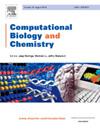黑籽(Nigella sativa)提取物通过激活caspase-3介导的调控途径促进LC540细胞早期和晚期凋亡:一种网络药理和分子对接方法
IF 2.6
4区 生物学
Q2 BIOLOGY
引用次数: 0
摘要
睾丸癌在全球范围内的发病率持续上升,而常规化疗往往伴随着严重的副作用,严重影响患者的生活质量。确定更安全的替代疗法日益变得至关重要,这导致人们关注具有高生物活性的天然可用植物化合物。长期以来,黑草(N. sativa)因其具有丰富的抗氧化和抗癌特性的生物活性化合物而备受关注,具有潜在的治疗效益和最小的副作用。由于我们使用了基于网络药理学的计算机方法,并结合了sativa对睾丸癌的体外和体内功效测试。分子对接研究表明,油菜植物化学物质与睾丸和其他癌症相关途径的关键蛋白之间存在显著的相互作用。生化分析显示,ROS水平降低,SOD、CAT、GSH等抗氧化酶活性增强,LDH水平降低。AO/PI染色进一步证实了处理后细胞凋亡和坏死率的增加。m-RNA分析显示炎症和凋亡基因如casp-3以及睾丸关键标志物如oct4、sox2和其他促炎细胞因子的显著表达。斑马鱼睾丸的组织形态学分析显示形态改变减少。有确凿证据表明其抗癌作用通过多种生物学机制,包括诱导细胞凋亡、氧化应激减少和癌基因抑制,这些发现值得进一步探索芥蓝作为综合癌症治疗的一部分,以改善睾丸癌患者的预后。本文章由计算机程序翻译,如有差异,请以英文原文为准。
Black seed (Nigella sativa) extract enhances early and late apoptosis through activation of caspase-3 mediated regulatory pathway in LC540 cells: A network pharmacological and molecular docking approach
Testicular cancer continues to rise in incidence globally, and conventional chemotherapy is often associated with severe side effects that significantly impact patient’s quality of life. Identifying safer alternative therapies is becoming crucial day by day which leads to focus on naturally available phytocompounds with high bioactivity. Over the period of time, Nigella sativa (N. sativa) has garnered attention due to the presence of its rich bioactive compounds with antioxidant and anticancer properties, providing potential therapeutic benefits with minimal side effects. Since we used a network pharmacological based in-silico approach combined with in-vitro and in-vivo efficacy testing of N. sativa against testicular cancer. Molecular docking studies showed significant interactions between N. sativa phytochemicals and critical proteins involved in testicular and other cancer related pathways. Biochemical assays revealed decreased ROS levels with enhanced antioxidant enzyme activities such as SOD, CAT, GSH and reduced LDH levels. AO/PI staining further corroborated the enhanced apoptosis and necrosis rates in treated cells. m-RNA analysis demonstrated notable expression of inflammatory and apoptotic genes such as casp-3 and key testicular markers such as oct4, sox2 and other pro inflammatory cytokines. Histomorphological analysis of zebrafish testis showed decreased morphological alterations. With solid evidence of its anticancer effects through multiple biological mechanisms, including apoptosis induction, oxidative stress reduction, and oncogene suppression, these findings warrant further exploration of N. sativa as part of integrative cancer therapies to improve outcomes for patients with testicular cancer.
求助全文
通过发布文献求助,成功后即可免费获取论文全文。
去求助
来源期刊

Computational Biology and Chemistry
生物-计算机:跨学科应用
CiteScore
6.10
自引率
3.20%
发文量
142
审稿时长
24 days
期刊介绍:
Computational Biology and Chemistry publishes original research papers and review articles in all areas of computational life sciences. High quality research contributions with a major computational component in the areas of nucleic acid and protein sequence research, molecular evolution, molecular genetics (functional genomics and proteomics), theory and practice of either biology-specific or chemical-biology-specific modeling, and structural biology of nucleic acids and proteins are particularly welcome. Exceptionally high quality research work in bioinformatics, systems biology, ecology, computational pharmacology, metabolism, biomedical engineering, epidemiology, and statistical genetics will also be considered.
Given their inherent uncertainty, protein modeling and molecular docking studies should be thoroughly validated. In the absence of experimental results for validation, the use of molecular dynamics simulations along with detailed free energy calculations, for example, should be used as complementary techniques to support the major conclusions. Submissions of premature modeling exercises without additional biological insights will not be considered.
Review articles will generally be commissioned by the editors and should not be submitted to the journal without explicit invitation. However prospective authors are welcome to send a brief (one to three pages) synopsis, which will be evaluated by the editors.
 求助内容:
求助内容: 应助结果提醒方式:
应助结果提醒方式:


